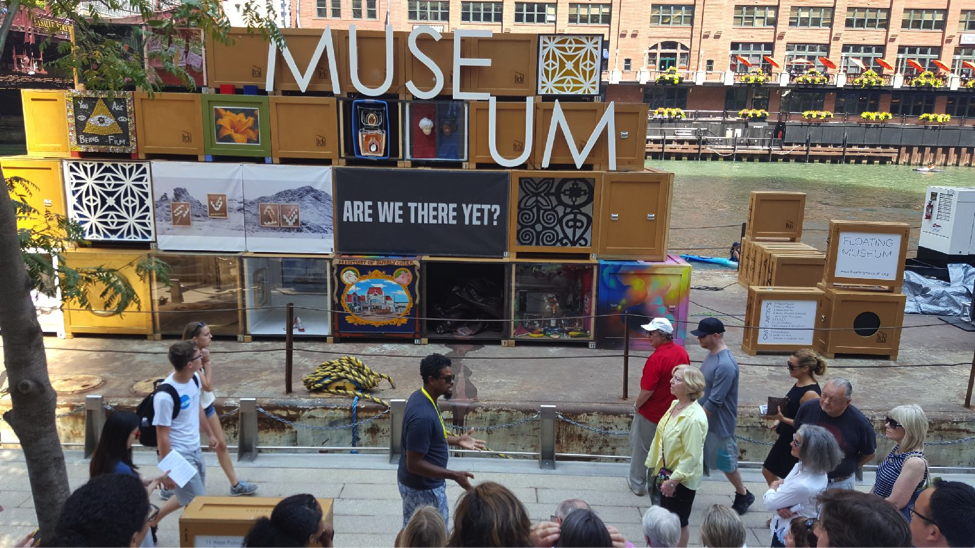Hi, Nicole here! When the Floating Museum project came across our scanning feeds, Elizabeth Merritt and I were both excited by the concept. We wanted to know more about the project and how it re-imagines where museums can do their work. The team at the Floating Museum asked independent curator Leslie Guy to share her thoughts about the project with us. Here, Guy explores the power of responsiveness and the importance of believing in community wisdom.
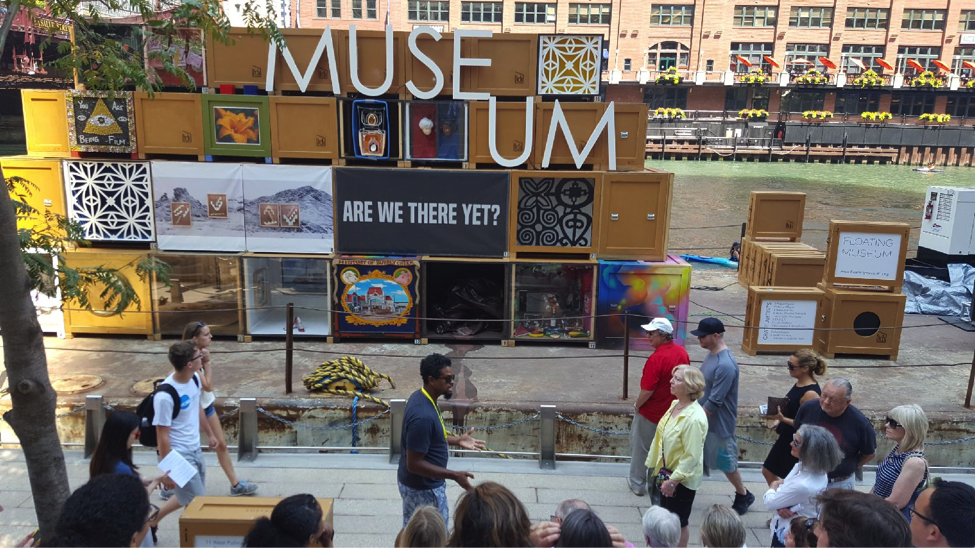 |
| The city as a museum: The Floating Museum on Chicago River |
Since 2015, the Floating Museum has developed a series of temporary, site responsive installations around Chicago. Working with local artists, historians, and organizations, this collective’s work critiques conventional museum ideology while fostering community engagement and dialogue. This Chicago-based artistic collaborative activates sites designed to elevate and enhance the cultural potential of its neighborhoods. Each of these site-specific activations is an equal exchange of knowledges, insights, perspectives, and expertise between the artistic collaborative and local stakeholders. Their work embraces the unknown at a time when the scarcity of funding incentivizes safe programming with predictable outcomes. There is significant risk in being unconventional when the funding community is more apt to support traditional, amply-resourced and well-established organizations. But, creativity and innovation flourish in spaces that can accept ambiguity and encourage the pursuit of the seemingly impossible.
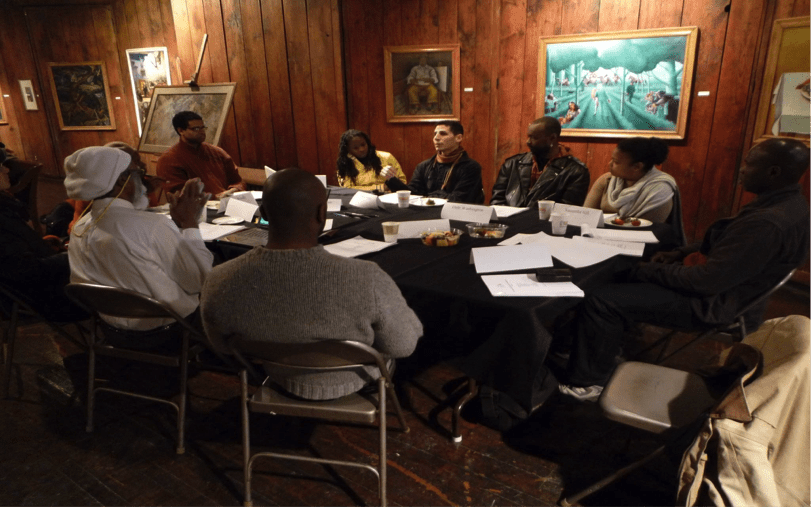 |
|
Stakeholder conversation: Planning meeting at Southside Community Art Center
|
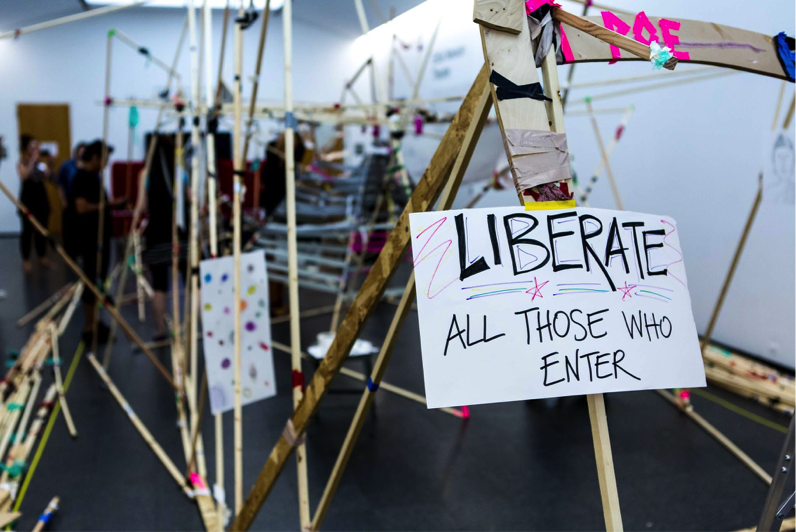 |
|
Stakeholder Conversation: Chicago Teacher’s Union
|
Process
The Floating Museum is a collecting institution with holdings ranging from items donated by the community and works made by contemporary artists to images of objects owned by other repositories. The artifacts that comprise the Floating Museum’s collection are valued for the meanings that have accreted over time through their use and reinterpretation. The valuation of items in the collections is non-hierarchical; preference is given to the meaning conferred from the multiple exchanges and social interaction between the maker and the collector. Ultimately, the items in the collection are physical manifestations of the social network that enables the collective’s project.
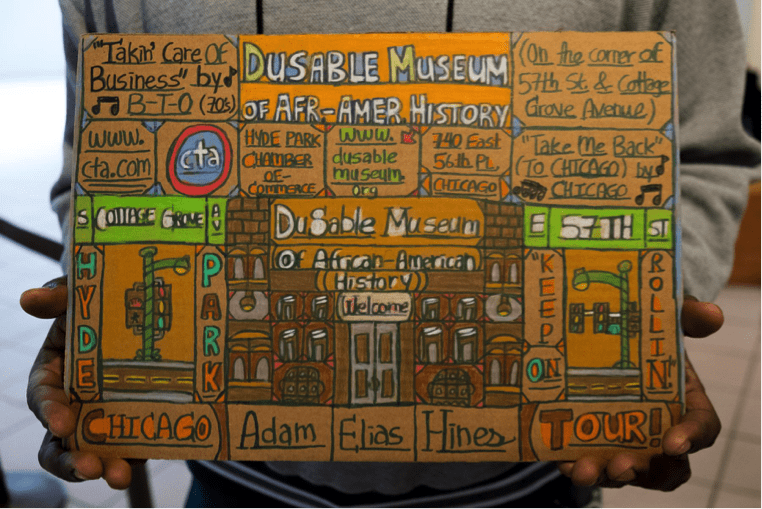 |
| Project Onward: Donation from artist Adam Elias Hines |
The Floating Museum’s structures change in response to its environment. Its forms have ranged from a barge floating on the Chicago River, to temporary edifices in a local park, to a mutable activation in a museum. Each of these was created to house the activities and knowledges peculiar to the given locale. The Museum’s projects resonate beyond the duration of the activation, as every interaction alters the collaborative. The team’s process of change, comparable to the formation of recombinant DNA, is precise, deliberate and intentional. Information gleaned from new, creative community partnerships is incorporated into the structure and knowledge base of the Floating Museum. The exact result of the each incorporation is not always clear. What is known is that incorporating new concepts and respecting seemingly divergent ways of knowing not only strengthens the collaborative’s work but also ensures that it remains viable and relevant.
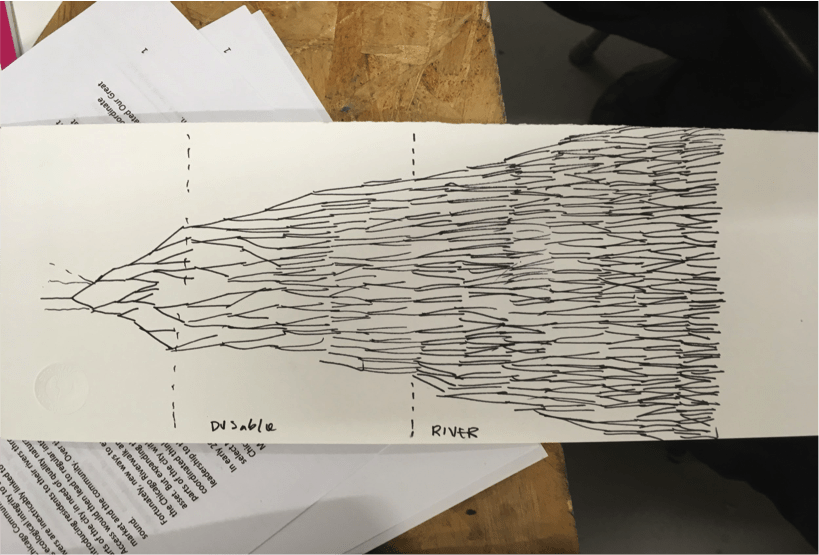 |
| Project expansion: Impact schematics |
In an effort to broaden their constituencies, many museums have relied heavily upon educational and public outreach programs designed to draw visitors to the museum building. As an alternative to this strategy, mobile museums have offered methods of community outreach that can meet people where they are. But, while a mobile museum can successfully address geographic and economic barriers to access, the more complex issues of content, context and message can remain. The Floating Museum works to address these issues by embedding itself within community and by situating their practice at the nexus of challenges. And, this engagement in turn fuels the creative output of the collective.
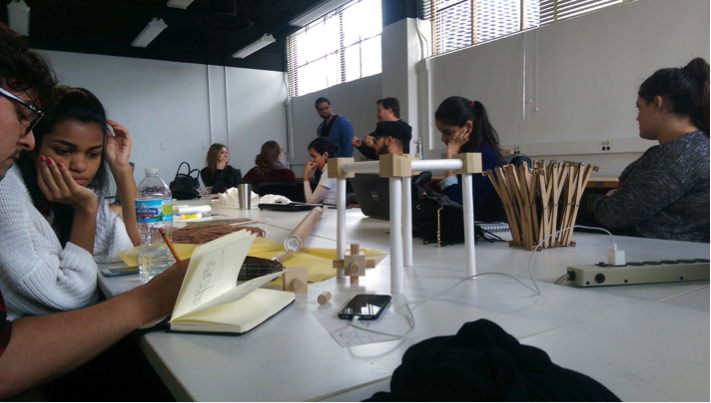 |
Imagining Structures: Illinois Institute of Technology students
in a class taught by Floating Museum Co-Director Faheem Majeed
|
Museums in Neighborhoods
“[The neighborhood museum] encompasses the life of the people of the neighborhood — people who are vitally concerned about who they are, where they come from, what they have accomplished, their values and their pressing needs.” — John Kincaid speaking on the formation of the Anacostia Museum in Storefront to Monument: Tracing the Public History of the Black Museum Movement by Andrea A. Burns
Chicago is a complex and diverse city encompassing 237 square miles and home to 2.6 million inhabitants living in 77 officially designated community areas. Despite the vastness of city, Chicago’s major cultural institutions are concentrated in close proximity to its renowned lakefront. The majority of the city’s 100 distinct neighborhoods exist beyond this narrow geographic region.
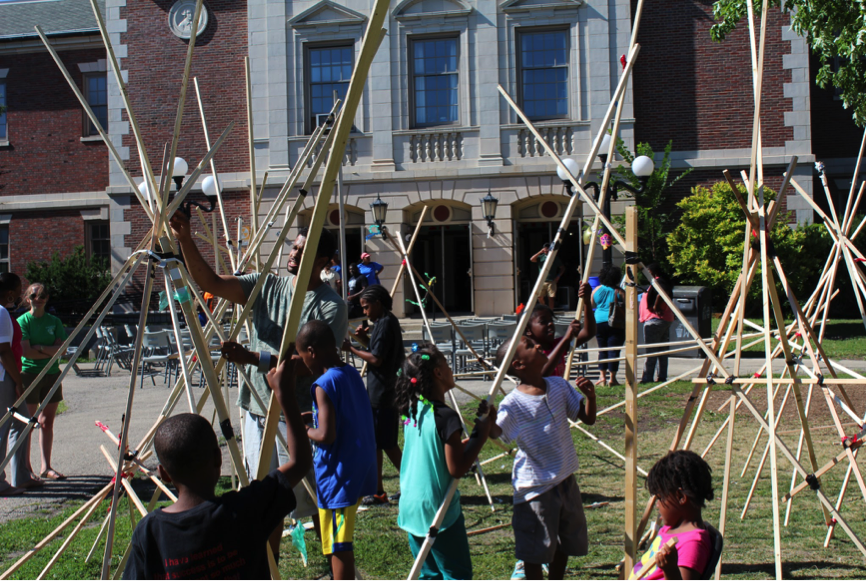 |
| Austin park: Youth engage in a building exercise |
Inspired by the Black Museum Movement and models like the Kunstverlein, the Floating Museum began their first community activation in the Austin neighborhood of the city. The impact of the work of Dr. Margaret Burroughs – a pivotal force in the Black Museum Movement, founder of two community-based institutions in Chicago, and a mentor to two members of the Floating Museum – resonates within the work of this collective.
In her writing about museums and location Sophie Forgan reflects, “While the respectability of institutional buildings, at least, lends credibility to the knowledge embedded within museum displays and activities, there are other aspects that may be examined. A site may be acquired and a suitable edifice erected, but the resulting building is rarely isolated from its context and may be affected by the type and reputation of the neighboring urban elements.” Movingthroughout Chicago and intentionally operating outside of the established cultural corridor, the work of the Floating Museum confronts conventional ideas about situational value and the primacy of locale in order to provide an innovative platform for the creative output of neighborhoods.
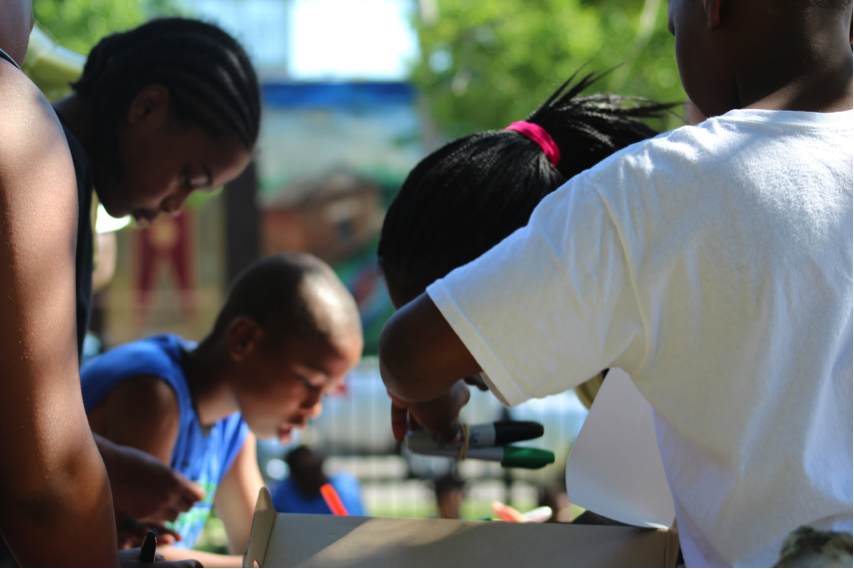 |
Austin park: Young residents use sticks and tape
to create a new museum structure |
The Floating Museum collective includes Andrew Schachman, Avery R Young, Faheem Majeed and Jeremiah Hulsebos-Spofford. The Museum will be presenting a new installation in September 2017 for Singing Stones, a group exhibition curated by the Palais de Tokyo’s Katell Jaffres as part of the first Hors Les Murs in the United States.
Elizabeth Merritt

